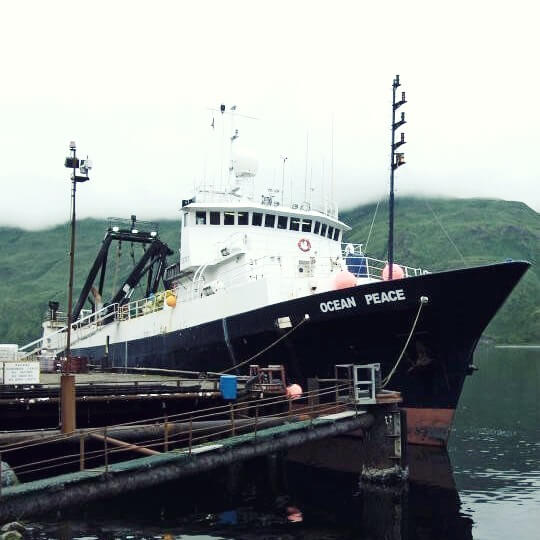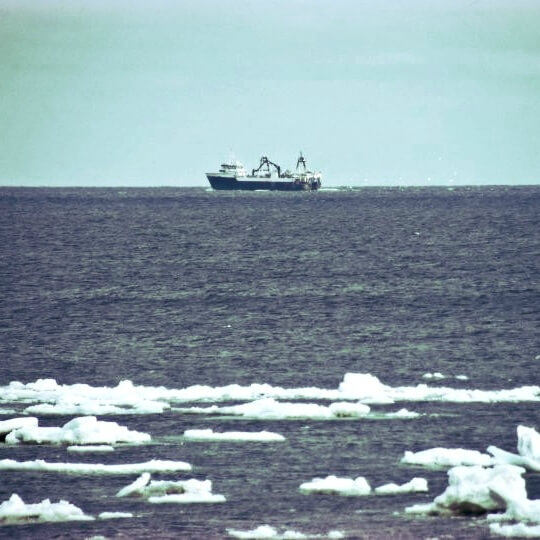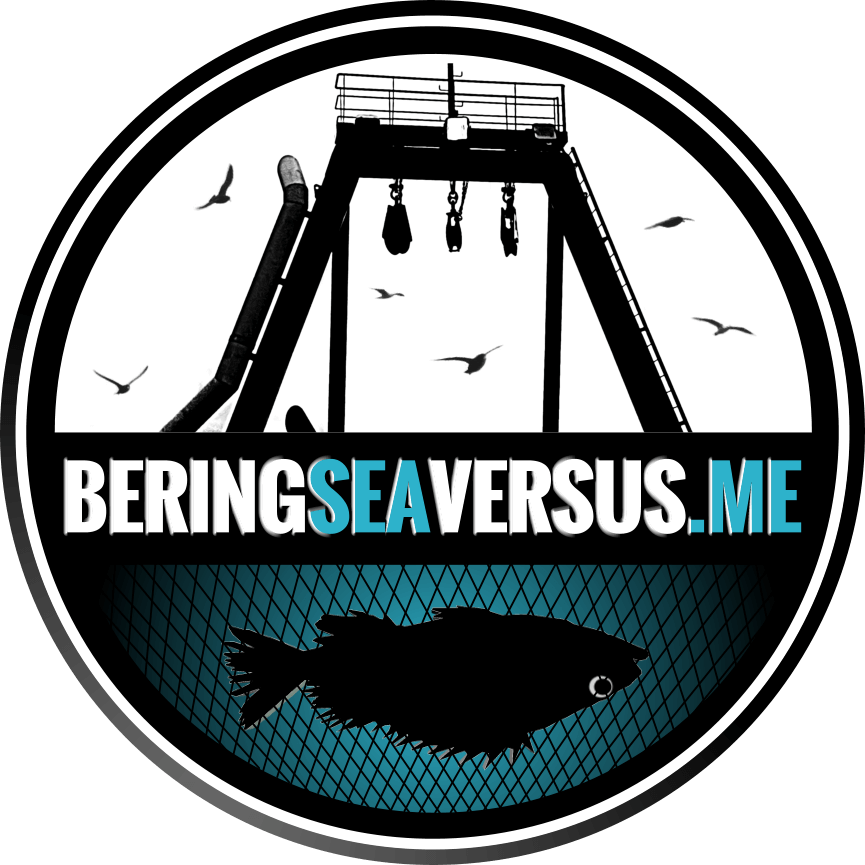Bering Sea – The Game
I worked on Alaska Seafood Cooperative factory trawler only – things might be little different on different boats like longliners, Pollock boats, crab boats…
How much money you make depends on:

#FTOceanPeace in #DutchHarbor preparing for Atka Mackerel trip. #trawler #factorytrawler #dragger #beringsea #fishnet #deckhand #deck #fishingvessel #unalaska #alaska #crane #crewmember #hardwork #harbor #dock #sealife #winch #fishing #outdoor
- The selling price of each fish depends on its demand and supply. For example if there is low supply we can charge more, but nets often come out emptier during these seasons. The opposite also applies… when there’s too much, the price of that fish will falls down and we will earn less for a greater quantity.
- 2010: Arrowtooth Flounder was quite abundant, but cheaper than Yellowfin Sole.
- 2013 – 2014: shortage of Arrowtooth Flounder caused rise in its price, meanwhile the abundance of Yellowfin Sole caused its price to fall bellow the cheapest commercially caught fish in Alaska.
- A big factor when it comes to fishing is not only the price of the fish caught, but also its size. The bigger the fish, the quicker we fill the freezer hall. This way, cheaper but bigger fish might be more profitable for fishermen as it takes less days to process. Also the bigger the fish of a specific species, the more expensive it is.
How much fish prices varies? Check out this slider:
The hardest fishing trip
Fishing of small Flatfish is more time consuming and more physically challenging than that of other target fish, while their value is relatively low. Trips of 55-70 tons of the finished product a day took at least ten days, but sometimes even over fifteen. This was dependent on the frequency of the catch and factory productivity (2012). From 2013, after many upgrades in the factory, we were able to process 100 tons a day. So trips don’t take as much time anymore, but are even more physically challenging for certain jobs in the factory. Nowadays Yellowfin Sole is very abundant in the Bering Sea. With higher supply its price went down, so we worked a lot harder for the same money last time round. I made around $2000 for a trip of 8 days.
The most time consuming fishing trip
Most time consuming was Rock Sole roe trip. Even after recent upgrades of the factory, we only processed around 65 tons a day. It was a lot of work for 65 tons. We had to cut the head off by hand, so we didn’t damage the most valuable part of Rock Sole – its roe. Also, backline crew had to separate Rock Sole males from females into different bins, which is not easy for the inexperienced eye. Not to mention the other species that had to be separated from them.
The easiest fishing trip

#fishing up #north in the #beringsea #boat #fishingboat #boat #sea #northern #trawler #dragger #alaska #ice #cold
Atka Mackerel trip was the easiest. This type of fish isn’t too big or too small, and thanks to its shape it’s easy enough to work with. We processed at least 100 tons of it, and sometimes it took only 6 days to fill up the freezer hall. On top of that its selling price was relatively high. I made over $5000 per trip.
The most painful fishing trip
Rockfish provided for the sorest trip. Its upper fin kept stabbing my hands during processing. It hurts but at the same time it is one of the most valuable fish to catch.Fishing Seasons
Target fish is decided depending on the biological season, and some other factors related to fishing quotas and fish population in the Bering Sea. These seasons apply to members of Alaska Seafood Cooperative mostly (factory trawlers):
- January to March – Rock Sole roe, Yellowfin Sole, Atka Mackerel, and sometimes even Pacific Ocean Perch.
- April to June – Yellowfin Sole, Arrowtooth Flounder and sometimes Atka Mackerel.
- July – Pacific Ocean Perch.
- August – Yellowfin Sole.
- September – Atka Mackerel.
- The rest of the year – mainly small Flatfish.
NEXT // INSTRUMENTS TO KEEP FISHING SUSTAINABLE





